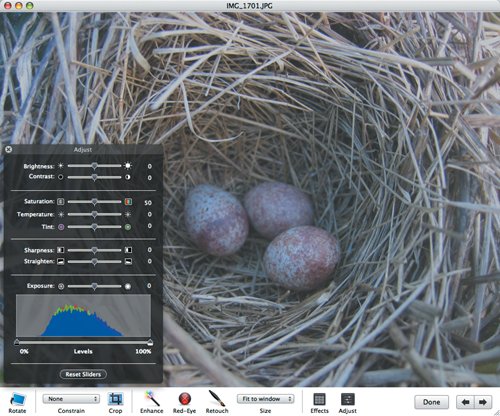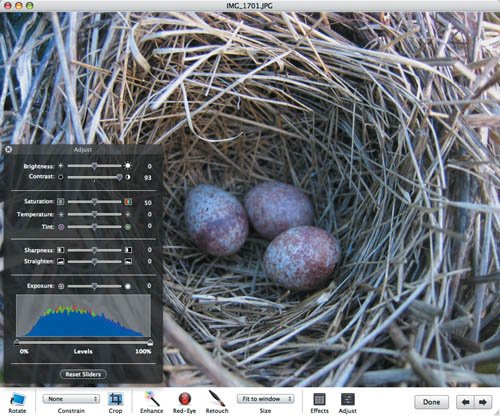Adjusting Contrast
| The contrast of a photo is the difference between the darkest and lightest areas of a photo. With too much contrast, you end up with overly dark and bright areas; with too little contrast, your photo appears flat. To adjust the contrast of a photo:
What the Contrast slider doesIn Figure 4.39, the photo of eggs in a nest was quite flat, with little difference between the light and dark areas of the scene. In Figure 4.40, I've increased the contrast significantly to give the photo more depth and vibrancy. Note that most photos are unlikely to need significant contrast adjustments; usually a little nudge will be all you need. Figure 4.39. This photo is too flat, with too little difference between the dark and light areas of the nest. Figure 4.40. By increasing the contrast, I made the individual twigs in the nest stand out, giving the picture more depth and detail. Note how the mountain ranges in the histogram have been flattened and spread out by the increase in contrast. If I had reduced contrast, the mountain ranges would have been squished in and up instead. Put another way, increasing contrast distributes the pixels in the photo over a greater range of brightness values, whereas reducing the contrast increases the number of pixels within a small range. Tip
|